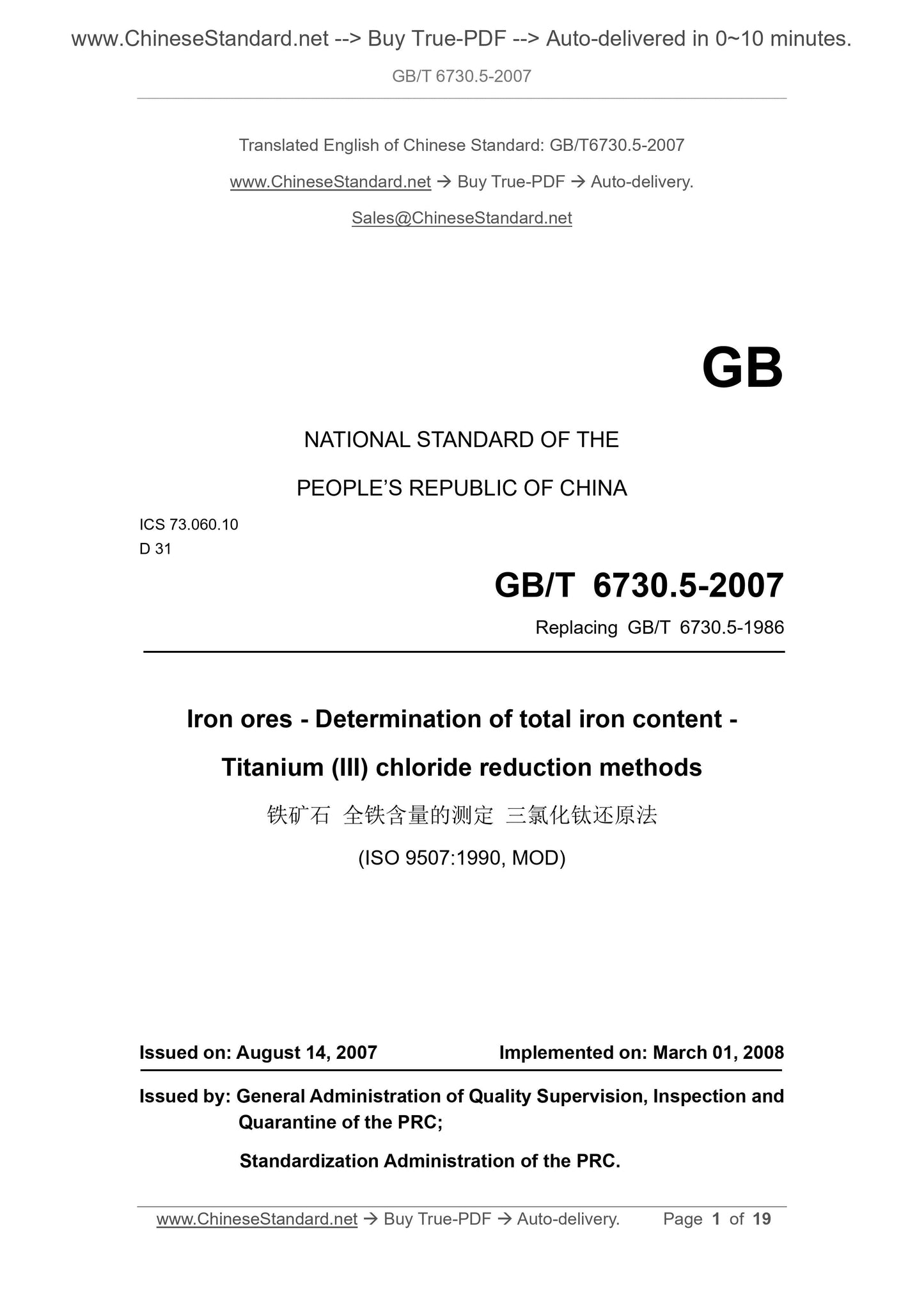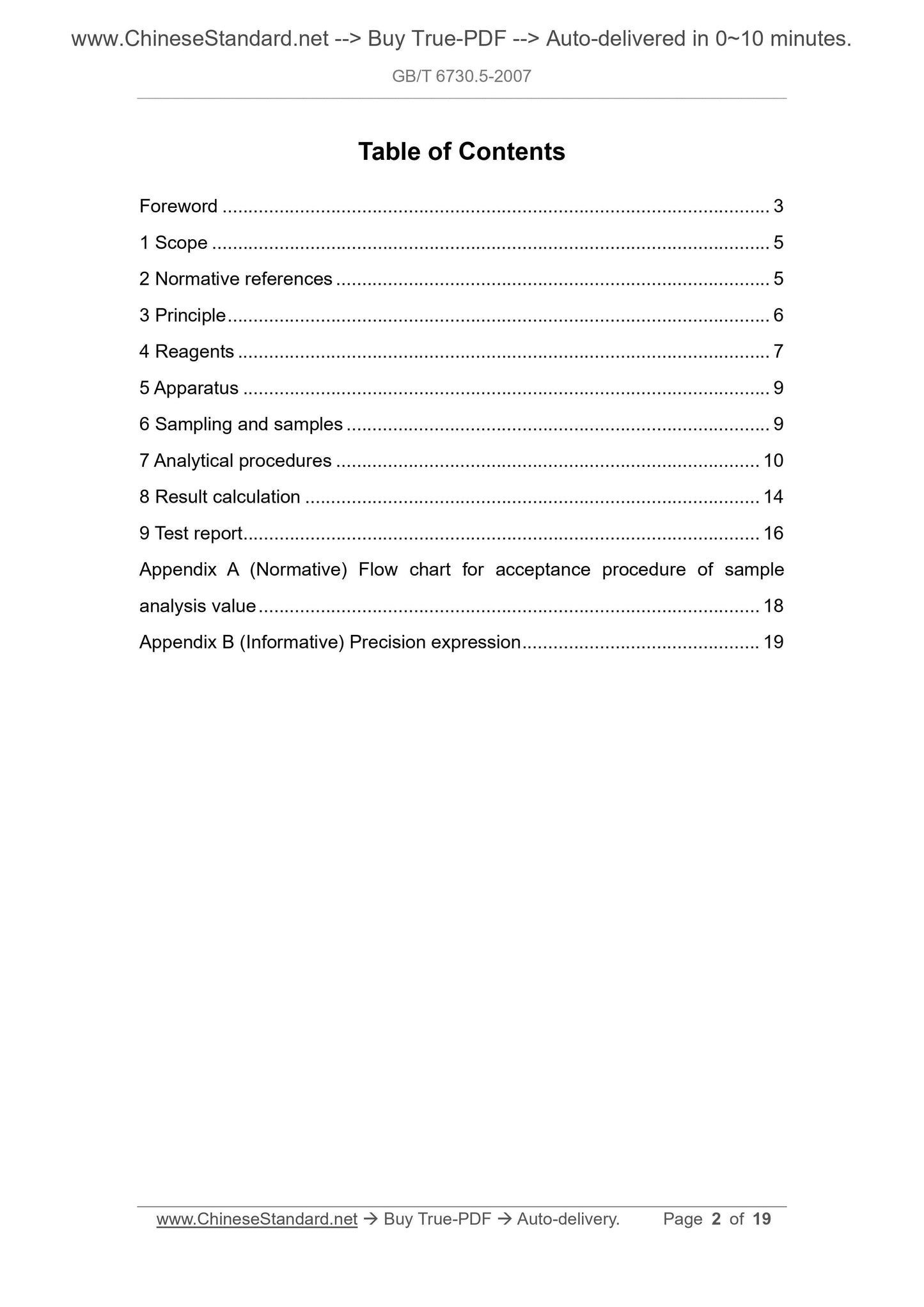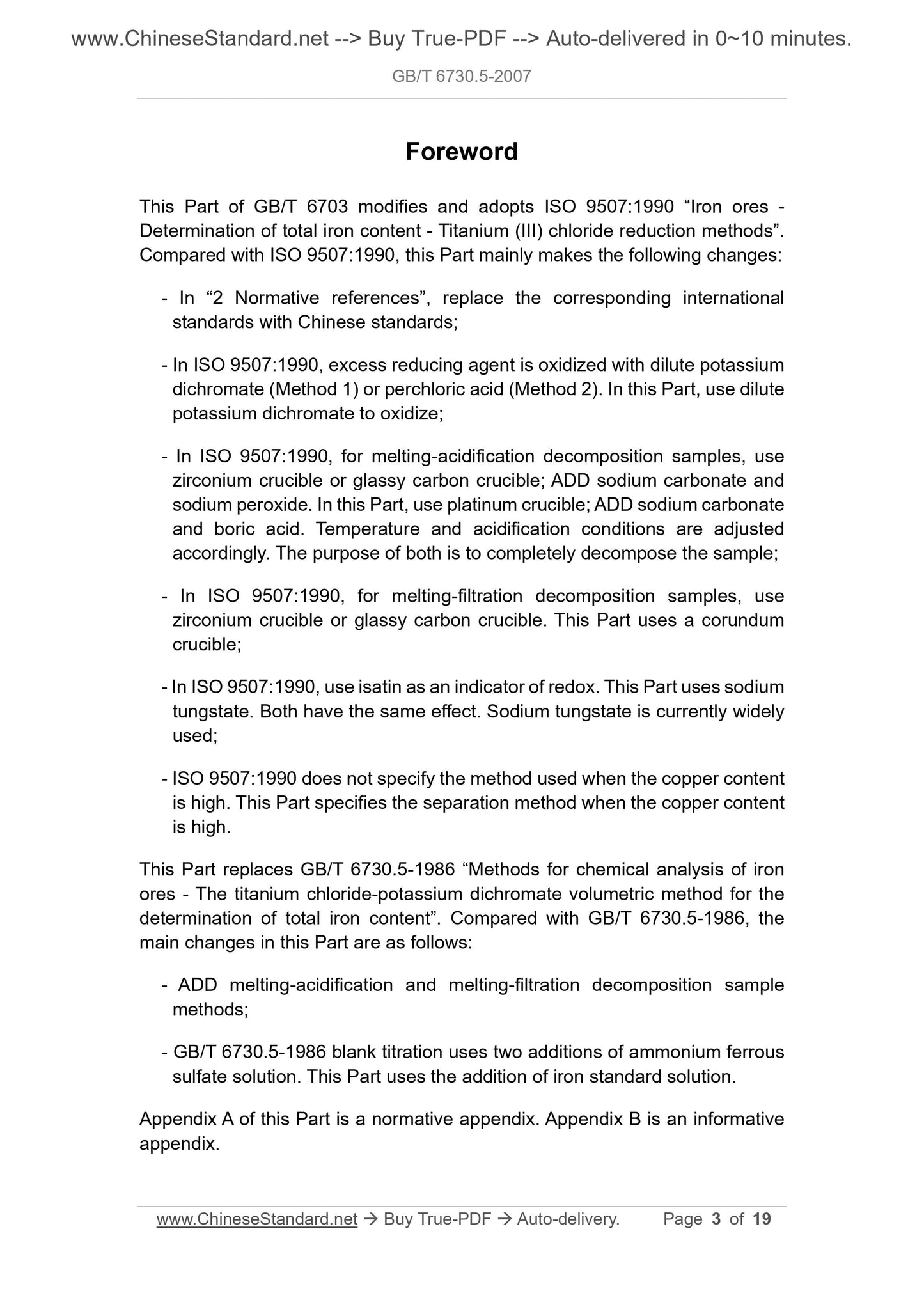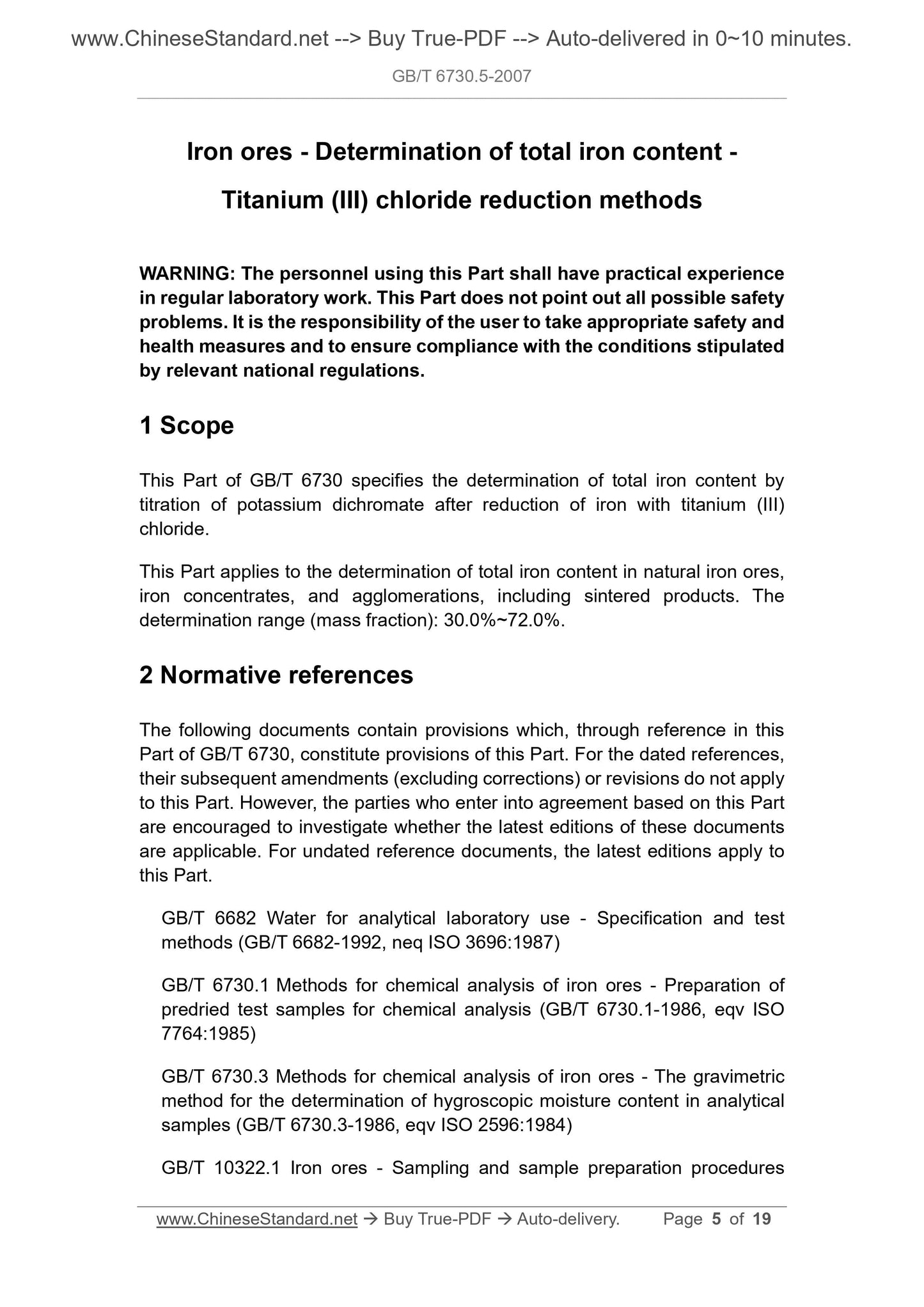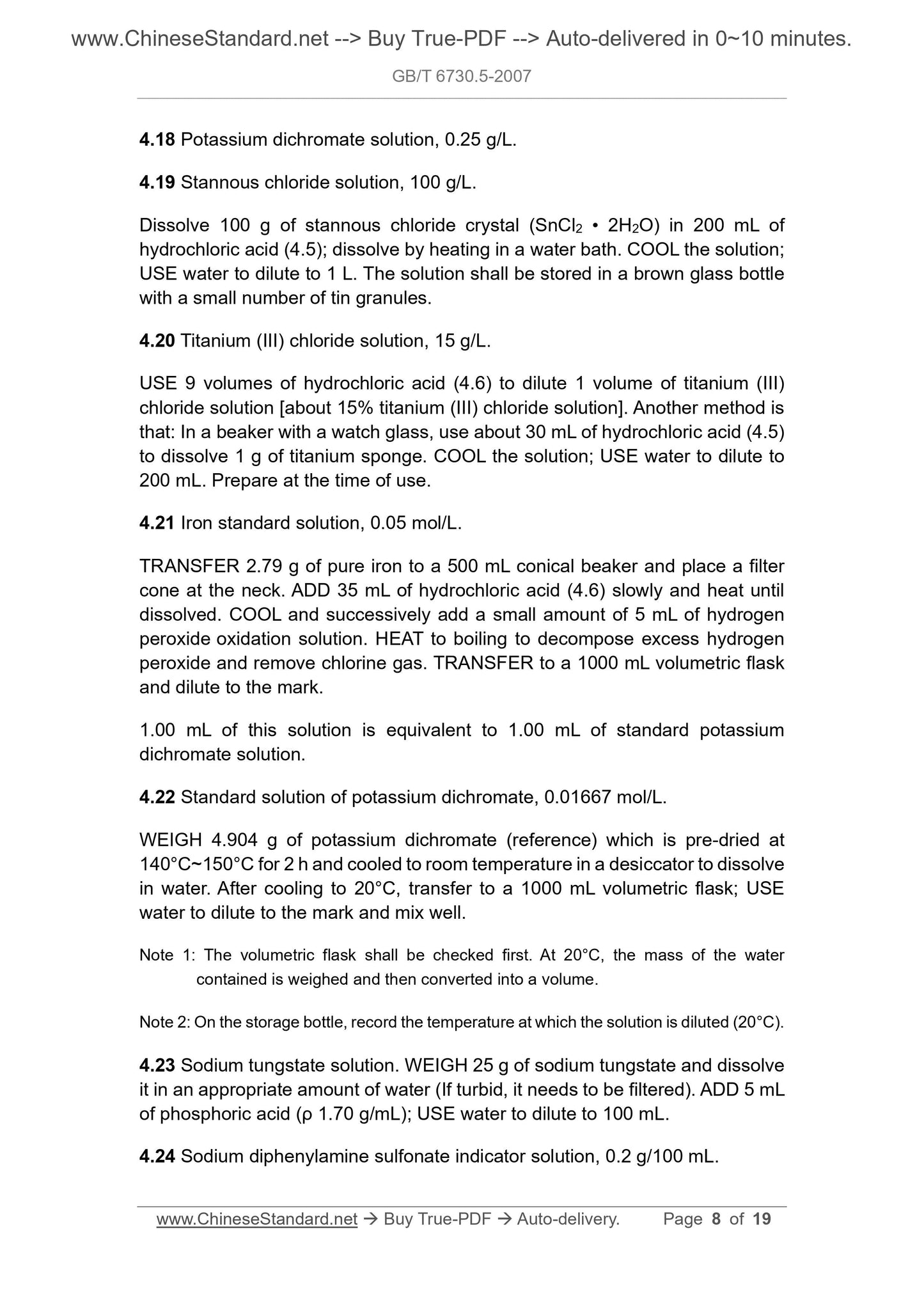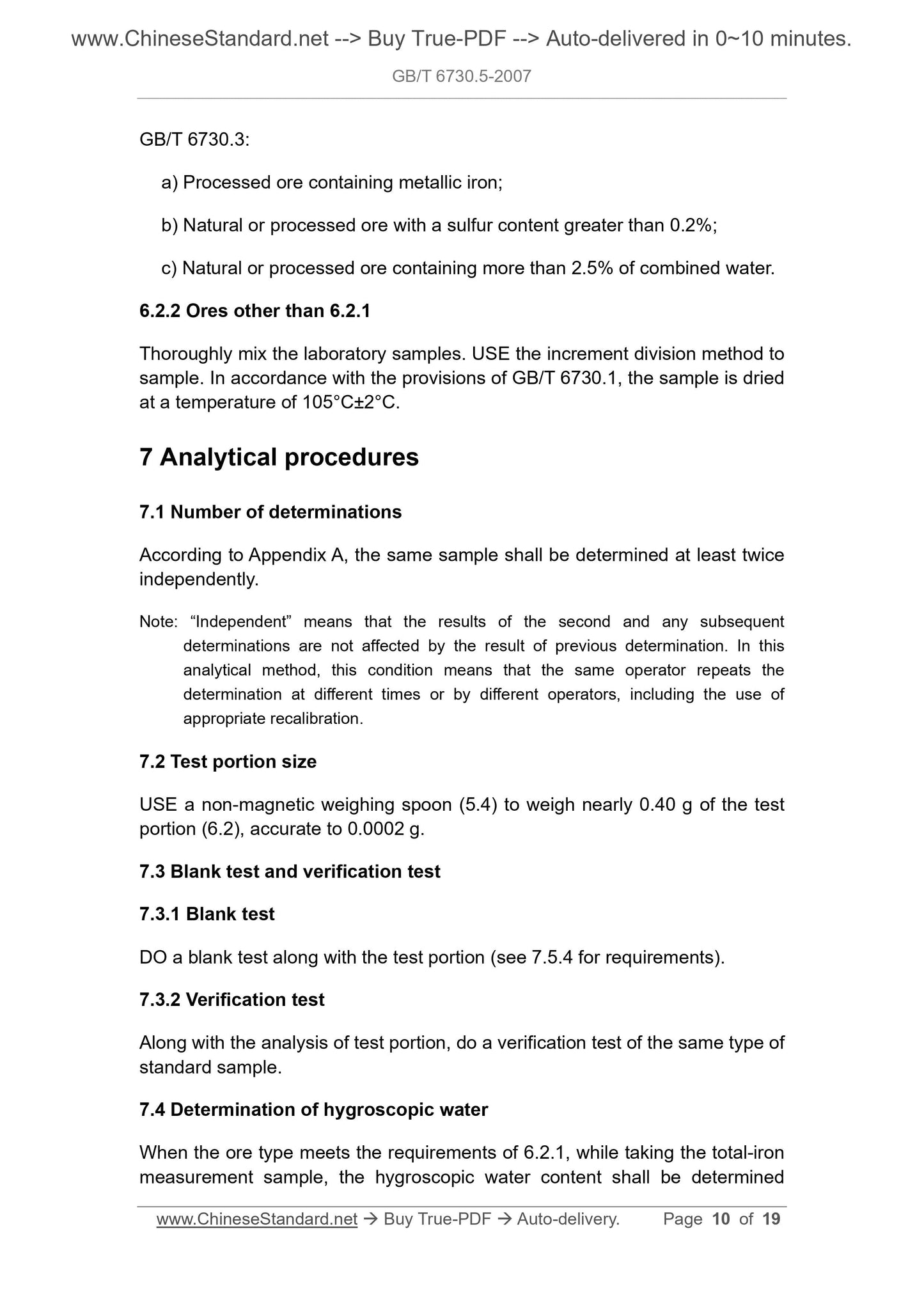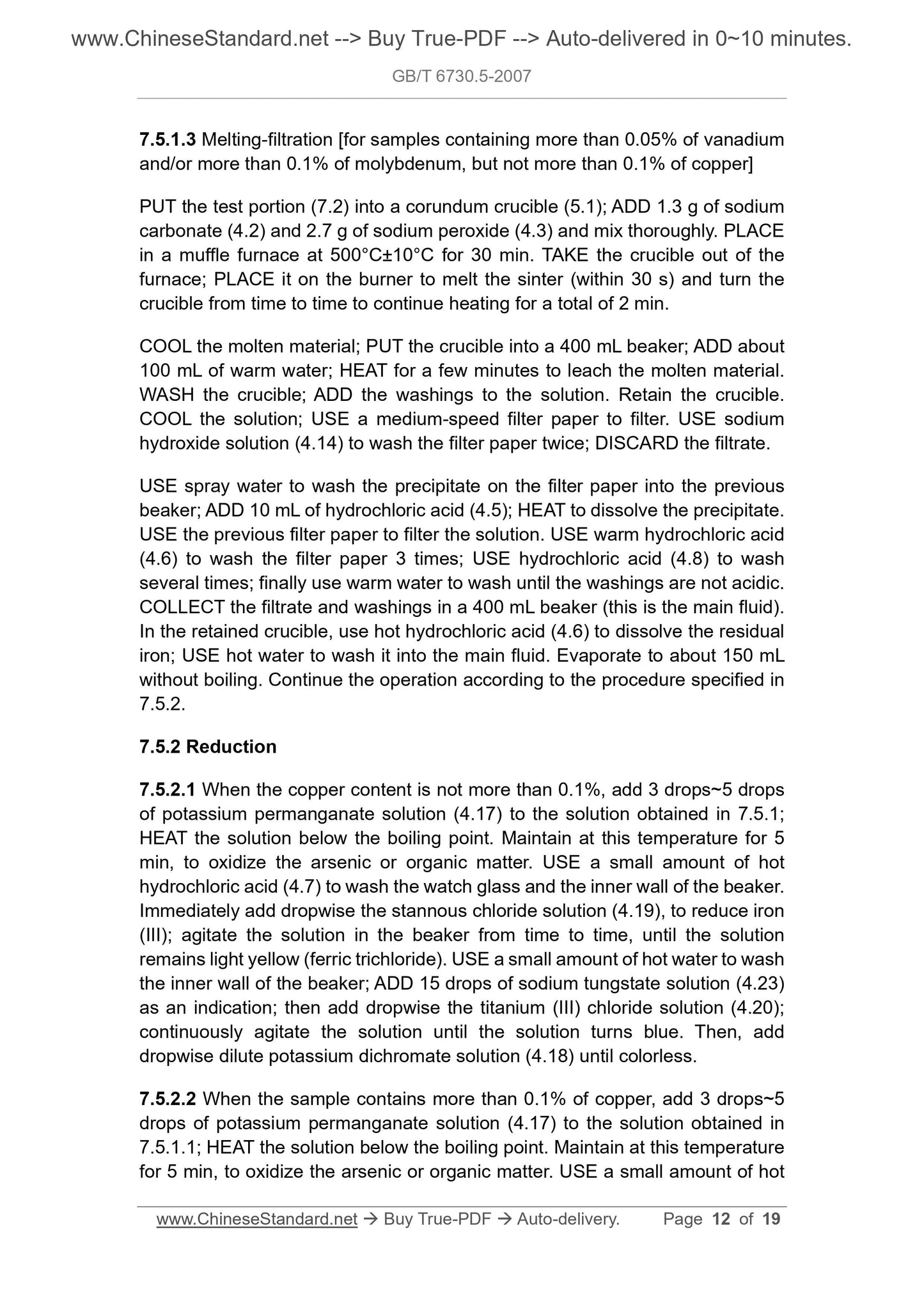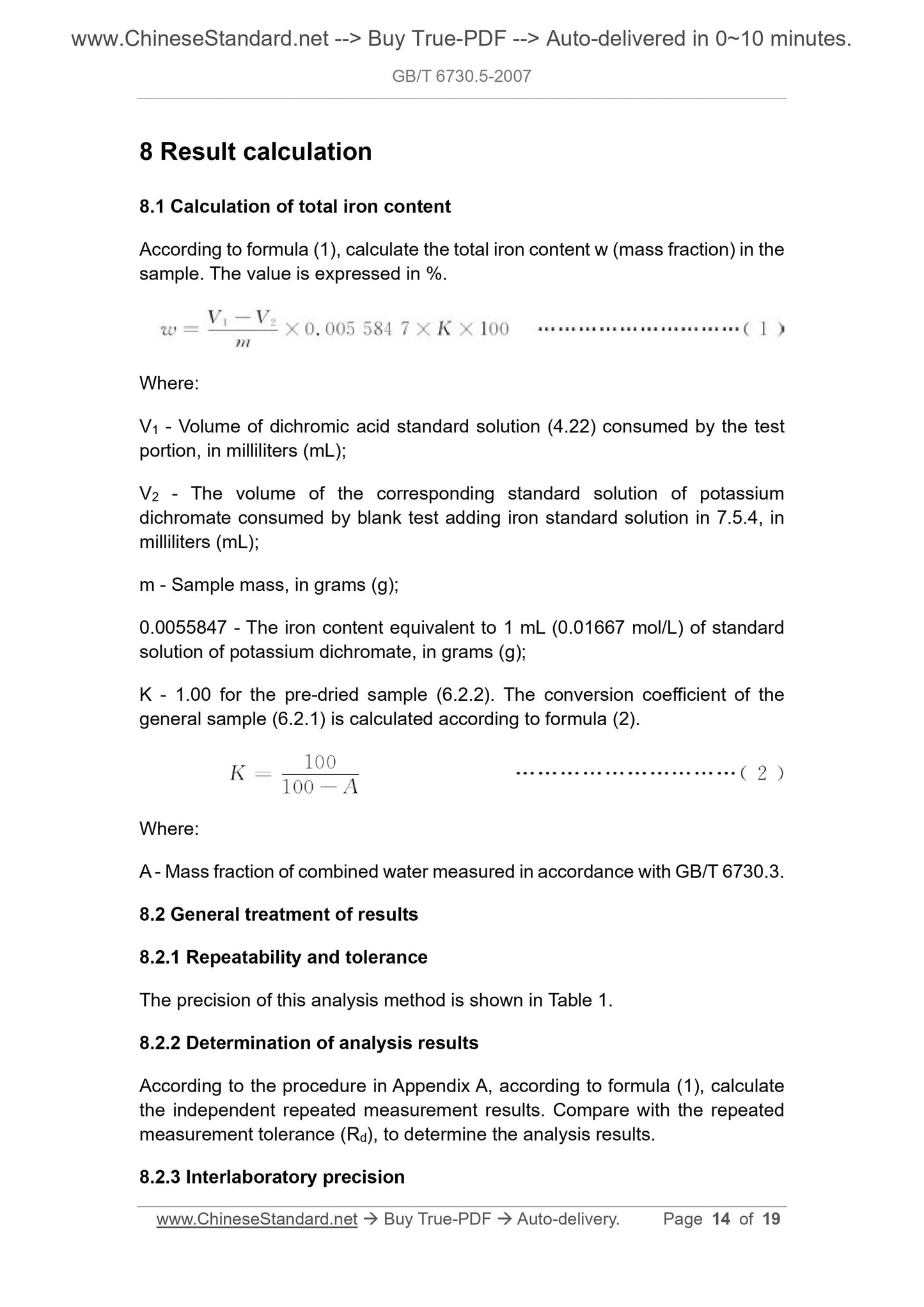1
/
of
8
PayPal, credit cards. Download editable-PDF and invoice in 1 second!
GB/T 6730.5-2007 English PDF (GB/T6730.5-2007)
GB/T 6730.5-2007 English PDF (GB/T6730.5-2007)
Regular price
$130.00
Regular price
Sale price
$130.00
Unit price
/
per
Shipping calculated at checkout.
Couldn't load pickup availability
GB/T 6730.5-2007: Iron ores -- Determination of total iron content -- Titanium (Ⅲ) chloride reduction methods
Delivery: 9 seconds. Download (and Email) true-PDF + Invoice.Get Quotation: Click GB/T 6730.5-2007 (Self-service in 1-minute)
Newer / historical versions: GB/T 6730.5-2007
Preview True-PDF
Scope
This Part of GB/T 6730 specifies the determination of total iron content bytitration of potassium dichromate after reduction of iron with titanium (III)
chloride.
This Part applies to the determination of total iron content in natural iron ores,
iron concentrates, and agglomerations, including sintered products. The
determination range (mass fraction): 30.0%~72.0%.
Basic Data
| Standard ID | GB/T 6730.5-2007 (GB/T6730.5-2007) |
| Description (Translated English) | Iron ores -- Determination of total iron content -- Titanium (��) chloride reduction methods |
| Sector / Industry | National Standard (Recommended) |
| Classification of Chinese Standard | D31 |
| Classification of International Standard | 73.060.10 |
| Word Count Estimation | 12,195 |
| Date of Issue | 2007-08-14 |
| Date of Implementation | 2008-03-01 |
| Older Standard (superseded by this standard) | GB/T 6730.5-1986 |
| Adopted Standard | ISO 9507-1990, MOD |
| Regulation (derived from) | China National Standard Approval Announcement2007 No.8 (Total No.108) |
| Issuing agency(ies) | General Administration of Quality Supervision, Inspection and Quarantine of the People's Republic of China, Standardization Administration of the People's Republic of China |
| Summary | This standard specifies the determination of total iron content of potassium dichromate titration after titanium trichloride reduced iron. This section applies to natural iron ore, iron ore concentrate and build blocks, including the determination of the sintered product of total iron content. Measuring range (mass fraction): 30. 0% to 72. 0 %. |
Share
